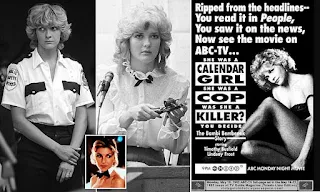From Playboy Bunny to Prison Escapee: The 40-Year Mystery of Laurie Bembenek
Lawrencia "Bambi" Bembenek's life reads like a Hollywood script: a striking 5'10" blonde, former Playboy Bunny, and ex-cop who was convicted of murdering her police detective husband's ex-wife. Yet, four decades later, her guilt remains hotly debated, with a mix of scandal, escape, and conspiracy theories keeping her story alive.
From Catholic Girl to Police Officer to Playboy Bunny
Born in 1958 in Milwaukee, Laurie was the quintessential good Catholic girl—straight A's, flute player, and dreams of university. When her parents refused to fund college, she pivoted to modeling and trade school before joining the Milwaukee Police Department in 1980, despite some old-school sexism. Her nickname "Bambi" came from a fellow trainee mocking her wide-eyed innocence—a moniker she loathed.
After being fired from the force—due to a dubious drug-related incident involving a friend—Laurie landed a job as a Playboy Bunny waitress, where she met Fred Schultz, a veteran cop and her future husband. Their whirlwind romance ended abruptly when, just months after their marriage, Fred's ex-wife Christine Schultz was found murdered in her Milwaukee home in May 1981.
The Murder and the Trial That Captivated a Nation
Christine Schultz was shot in the back while tied up in bed, her two young sons witnesses to the horror. Laurie was arrested a month later, charged with first-degree murder, and convicted in 1982 after a televised trial that gripped Wisconsin and beyond.
The prosecution painted Laurie as a jealous homewrecker who wanted Christine dead to stop alimony payments from Fred. Key evidence included hairs matching Laurie's found at the scene, the murder weapon—a revolver belonging to Fred—and a wig flushed down the toilet that matched fibers at the crime scene. Witnesses claimed Laurie had spoken about killing Christine and owned clothing similar to what the killer wore.
However, the victim's son insisted the killer was a man, and Laurie's alibi and character were fiercely disputed. Her refusal to take a lie detector test and the questionable handling of evidence by police added fuel to the fire of doubt.
Was She Framed? The Conspiracy Theories and Escape
Laurie always claimed she was the victim of a police frame-up, possibly retaliation for her sex discrimination lawsuit against the Milwaukee Police Department. Her friend and former colleague Judy Zess, whose testimony was pivotal in convicting Laurie, later recanted and hinted at a cover-up involving other suspects.
In 1990, Laurie pulled off a dramatic prison escape with her fiancé Dominic Gugliatto, fleeing to Canada and living under assumed names until a tourist recognized her from a TV segment. She was recaptured and returned to prison but maintained her innocence.
Legal Battles and Life After Prison
After years of appeals, DNA testing, and legal wrangling, Laurie accepted a plea deal in 1992, pleading no contest to second-degree murder. Her life sentence was reduced to time served, and she was released after ten years behind bars. New ballistics tests suggested the gun she was accused of using might not have been the murder weapon, and male DNA found at the scene raised further questions.
Despite her release, Laurie struggled with PTSD, alcoholism, and the stigma of her conviction. She attempted to clear her name until her death from liver failure in 2010. Her family continues to seek a posthumous pardon.
The Legacy of "Bambi"
Laurie Bembenek's story remains a potent mix of glamour, tragedy, and mystery. Her case exposed flaws in police investigations and the justice system, especially regarding women in law enforcement and the media circus surrounding high-profile trials. The slogan "Run, Bambi, Run!" became a rallying cry for supporters convinced of her innocence, spawning books, films, and podcasts


